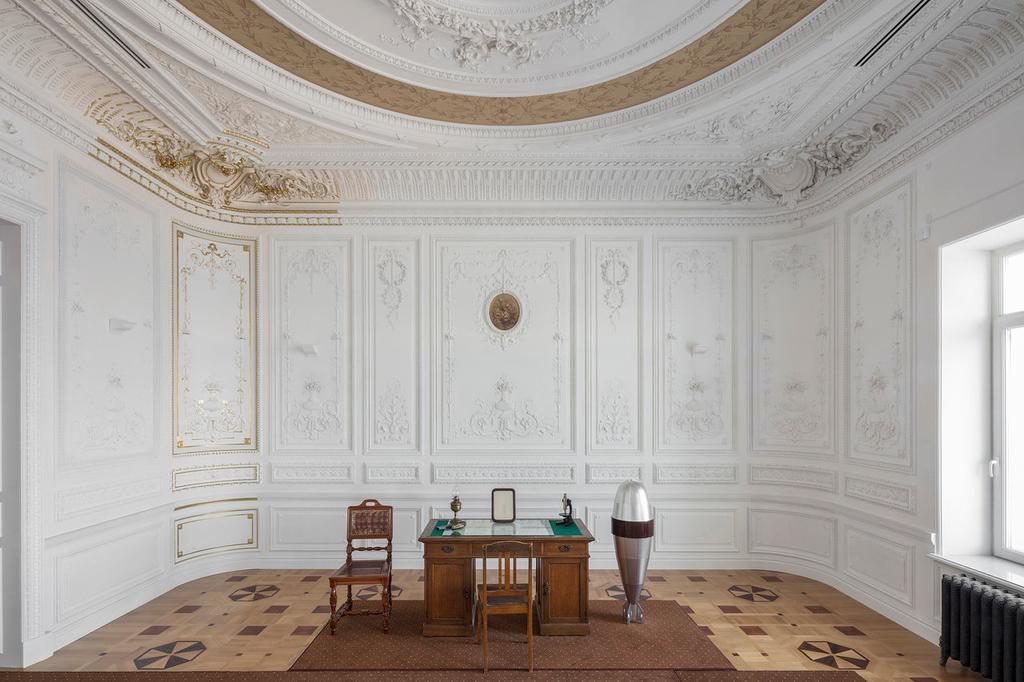Living with Art
The 24th Meeting of the State Hermitage’s International Advisory Board
23 August 2018 - 26 August 2018
Curated by Dmitry Ozerkov

Konstantin Zvezdochetov. “Purity angel”.2017. Irina Korina. “Xenophobia”.2014.
Tatyana Akhmetgaliyeva. “Sea of rains”. 2013.
The State Hermitage has hosted the latest, 24th meeting of its International Advisory Board, which was created on the initiative of UNESCO in 1994.
The gathering was devoted to current problems relating to the development of the Hermitage museum. Traditionally sessions of the International Advisory Board are attended by the directors and heads of some of the world’s foremost museums and cultural institutions: the National Gallery in London, the Rijksmuseum in Amsterdam, the Metropolitan Museum in New York, the Staatliche Kunstsammlungen Dresden, the Stiftung Preussischer Kulturbesitz, and more.
The members of the Advisory Board acquainted themselves with the new Hermitage exhibitions and permanent displays. As part of the cultural programme, the participants visited the Great Menshikov Palace, Palace of Peter III, Chinese Palace and park at Oranienbaum, and also the Kushelev-Bezborodko mansion in Saint Petersburg.
An exhibition of contemporary Russian art was organized in the rooms of the Kushelev-Bezborodko mansion specially for the members of the Advisory Board – the leadership of the State Hermitage and the museum’s guests. The exhibition curator was Dmitry Ozerkov, the head of the Hermitage’s Department of Contemporary Art. The works displayed were selected from the Gazprombank collection, the only corporate collection to be specifically devoted to contemporary Russian art.

Vadim Zakharov. “Fountain”. 1992-2000. Konstantin Batynkov. “Oil rig”.2009.
“Of the more than a thousand works in the Gazprombank collection, a few dozen were selected for the exhibition,” Dmitry Ozerkov says. “they were all created by young artists from Russia and present the art of the 1990s–2010s. They include classic figures of contemporary art, such as Prigov, Zvezdochetov and Monastyrsky, as well as some exciting young names. This small cross-section of contemporary artistic processes is fairly representative. It resounds with a selection of the subjects and themes addressed in present-day artistic thinking. A dialogue of creative generations can be heard within it.
“An invariable characteristic of Russian art is its attention to the link between past and present, old and new.
“Irina Korina’s Rocking Chair and the three sculptures Present Perfect by Alexander Povzner directly address the theme of time, of mutations. They are about the “World Turned Upside Down”. The exhibition begins and ends with them. The sad and the tragic – in history and in one’s personal life – can only be perceived appropriately at a distance, at a certain remove. The history of the mansion and its future create just such conditions for these works. It’s good to laugh at a witty joke, when all the tragedy is in the past.
“Vadim Zakharov’s Fountain and Andrei Monastyrsky’s Earth Works are about those same allusions to the past and the necessity (or impossibility) of seeing it differently. Both artists have represented Russia with solo projects at the Venice Biennale of Contemporary Art in different years. They open the discussion about time through its tokens.
“Tatyana Akhmetgaliyeva’s Sea of Rains is a multi-layered deconstruction of the picture surface opening up into the space of the house. The nice pleasant weaving is out of tune with the red colour of the threads that seems alarming and even tragic. In a similar way, Vinogradov and Dubossarsky’s Deer is an allusion at one and the same time to both the observation of nature and to hunting feats. Depending on the age of the viewer, it might be a tender little children’s picture or a reminder of a successful trophy. We installed both these works in a room with a unique Eastern ceiling so that the motifs of the pictures and the interior might engage in a whole variety of different dialogues

Arseny Zhilyaev. “Tsiolkovsky’s Study”. 2016.
“Arseny Zhilyaev’s Tsiolkovsky’s Study is about something else. The interior deliberately constructs reminiscences of the scientific and creative work of one of Russia’s most important scholars who became a philosopher of Russian Cosmism and a prophet of Soviet space-exploration. The whole of life in a mansion of the nobility is constructed around the owner’s study. The same theme is addressed but in a different – playful, parodical – key in Darya Irincheeva’s bookshelves.
“Petr Bystrov’s portraits play on recognition at a distance. The images that he puts together from materials to hand can be easily recognized, but on approaching closer you are astonished by the banality of the components. This is a game of familiar and unknown, and of rich and poor. We placed them in the large grand hall, where they hang like portraits of the members of a Russian aristocratic family.
“This fairly small project tells both about Russia’s best artists and about how in fact their art should (and in the future will) live in each of our homes.”
The exhibition aroused great interest and, we hope, helped to achieve what we consider one of the most important goals of our collecting activities – the greater acquaintance of the worldwide artistic community with the work of present-day artists from Russia.
